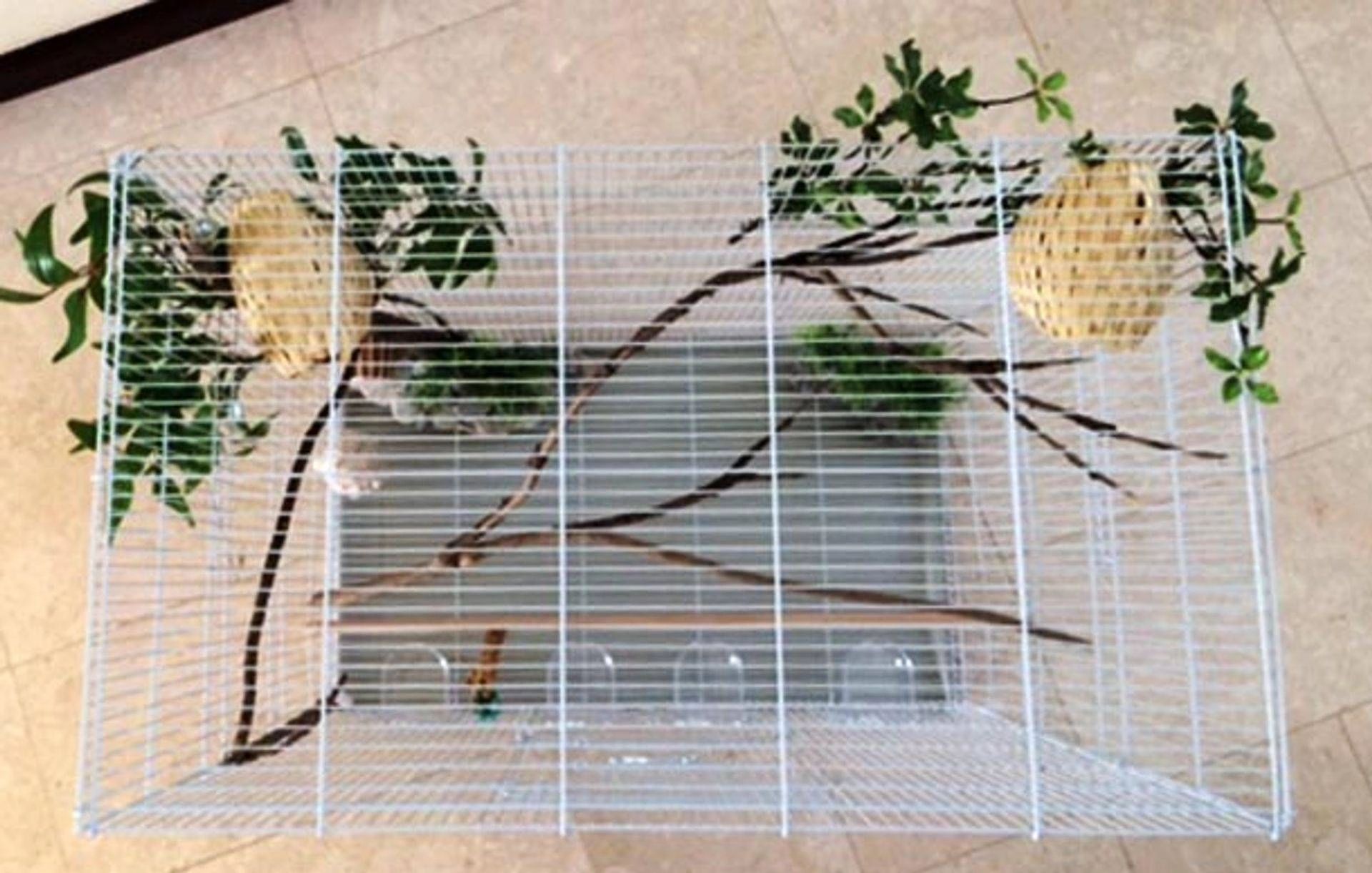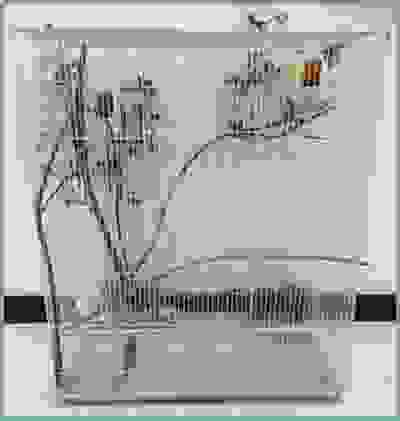
Size, Shape, Perches, Toys?
Designing your enclosure
Designing a Zebra Finch enclosures is not a simple process. A suitable environment for a bird encompasses a wide range of needs in all stages of life.
Cage Design
Im going out on a limb here...
... but more important than the cage size is the design. Many people assume ‘more is better’ but that just isn’t the case. I have seen massive cages which are counterproductive and not conductive to healthy birds.
Try to find an enclosure that is longer than it is high and has no more than half inch bar spacing.
Suitable cage size for a single pair is 18x18x24 however there are many possibilities, as long as they have 2 sq ft of space. Notice I said sq ft, not cubic feet. This is a common teaching that the birds desire to fly horizontal rather than vertical.
However, when I observed wild finches I noticed the flight patterns were spastic- flying vertically approximately 35% of the time. I returned to my study and modified one of the cages to simulate a narrow enclosure. After 3 months they too were flying vertically, and ‘hovering’. They were able to lift off as if they were a helicopter and touch down on an adjacent perch.
You have to work twice as hard to flap your wings and fly vertical than horizontal. Upon examination, the supplemented group in the vertical cage had a significant increase in muscle mass from the exercise, while the control group was only a minor increase from improved supplementation.
This leaves a definite possibility to have a variety of cages and larger selection of shape and style options. My advise is to spend a few more dollars to get the better looking cage. Human physiology suggests that if you enjoy something, you will take better care of it. So buy a cage that fits with your home décor, and buy decorations for the cage that make it attractive. You will not regret it.

Single pair cage- more appropriate than the common recommendation.

Perches / Branches
Natural is always better!
Small cages are made worse by people placing two long dowels in the center of the cage. This causes a slew of health and mental issues.
The mental stimulation provided by real branches is non-debatable, and saves the finches from arthritis and sores. Can you imagine standing in the same place, in the same shoes all day?
Please provide real branches (non toxic wood list here), and leave room for flight (even a flutter here and there). Even a small cage can be made more suitable by the addition of some real branches of varying sizes located on either long side of the cage- one toward the top, and one centered lower.
Make sure when designing your cage look at your cage from a birds eye view, ensuring the branches don’t vertically overlap other branches or food dishes (see image to the right). As the birds sit, their feces can easily soil things beneath them (other birds, branches, water dishes, etc). This only create more maintenance for you as the owner.
If you need assistance creating a positive enclosure, I am available to help. You can see examples and contact me here to create a custom cage.
Motivation
PHYSICAL MOTIVATION:
Please provide your finches with entertainment in the form of found objects. Long grass clippings to carry around, flowers to gnaw, or nesting material. These items can just be placed on the cage floor for a couple days worth of enjoyment.
Decoration
Make sure to decorate your enclosure
Plastic plants are best- there is concern the birds may shred silk plants. It is better to place plant outside the enclosure as this still provides the illusion of 'being in the threes' but doesn't take up valuable real estate inside the cage. Live plants are fine, as long as they are non toxic. However the soil (which often has fertilizer or pesticides in it) with foraging birds creates a huge mess and it is nearly impossible to get feces off limbs and leaves.
I also create at least one structure on the floor of the cage which can be removed through the main access door for cleaning (see images to the right).
Rock mound: I used tumbled rocks so they have a smooth surface so excrement can easily be washed off. I made a wire frame, and glued the rocks to the surface.
Concrete stand with Shells: I mounded concrete leaving a hole for plastic vegetation. Can also be hosed off, or thrown in the dishwasher. I often use concrete, and then attach a facade of assorted stones or shells.
Firewood: easily purchased untreated firewood provides an interesting perching station. After these become heavily soiled I just dispose of them.


Combining Cages
When I put two double breeders together- Priceless!
Became a awesome enclosure for 2 pairs.
ENCLOSURE SIZE/ POPULATION:
There is a direct correlation of population density on development and reproduction. Finches in lower density conditions produced significantly larger birds, longer song motifs with more syllables and increased surviving offspring. The results of numerous studies prove that population density affects various aspects of Zebra Finch development, with birds living in low population density conditions having an advantage over those living under higher population density conditions. This should be considered when created an aviary environment.
ADDRESSING QUARANTINE:
Quarantine cages are a necessity. They can be something as simple as a old aquarium, to a small bird cage. But often quarantine happens at the least expected time.... you need to be able to medicate, introduce or separate birds. Therefore it is advisable to have a suitable enclosure in a separate area that is amicable to the lifestyle a finch is accustomed too. Make natural branches of varying size, cuddle bone and aesthetic items so they don't feel as if it is a prison. Make sure however that any of these items can be washed or thrown away at a moments notice to prevent the ailments from spreading.
CLEANING
Make sure you keep your cage clean. F10 once a month- involves removing birds and deep cleaning the cage and ornaments. Remember- whatever you put in the cage at some point needs to be cleaned- maybe removed. So use things that are washable.
F10 is a veterinary grade cleaner that is positively amazing. They make three important products:
Hard surface cleaner with suds (for areas that can be rinsed off), disinfectant (for areas that cannot be rinsed) and fogger (if you have a area which has been infected with a disease). I dont recommend any other product, details can be found HERE.
